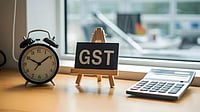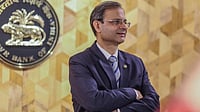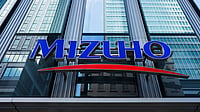Ever imagined being fired just to get hired again? Well, that's what is happening with Sam Altman. The man has been making headlines every single day. Fired for what some deemed as 'candid' communication, Altman's journey has evolved into a spectacle of hiring, firing, and then rehiring, eventually creating a narrative that feels straight out of a high-stakes business thriller.
While skeptics may dismiss Altman's departure and return as a staged performance, the fact that the entire employee base threatened mass departure after his firing speaks volumes about the stakes involved. It goes beyond a typical conflict between executives and board members or workplace dynamics. The concern lies in determining who should have the upper hand in something seemingly small but immensely powerful—a stake that holds the potential to shape the futuristic aspect.
Here is a quick wrap about what has happened in the last seven days around Open AI.
Long story short
On November 17, OpenAI's board dismissed Sam Altman on the say of communication inconsistencies, eroding confidence in his leadership. After which, the CTO of the corporation, Mira Murati was appointed as the interim CEO in his stead.
Microsoft's commitment to its partnership with OpenAI remained intact, as affirmed by CEO Satya Nadella. Following Altman's departure, co-founder Greg Brockman also announced his exit. On November 20, Nadella disclosed that both Altman and Brockman would be joining Microsoft to lead a new team.
Things took a drastic turn when almost the entire employee base of OpenAI threatened mass resignations and join Microsoft unless the board stepped down. However, in a surprising development on November 22, OpenAI reversed the course, announcing the return of Sam Altman and Greg Brockman to the organization.
Organisational Structure, Stakeholders & Strife
Founded in 2015 as a non-profit by Altman and Silicon Valley investors, Open AI aimed to build artificial general intelligence (AGI). Facing financial constraints, it created a for-profit subsidiary in 2019, capping investor profits while directing excess returns to the non-profit.
With a goal to reinvest profits until the core objective is achieved, the board members excluding investor representation, determines AGI attainment. Recent events involving the loss of confidence in Sam Altman by some board members, including co-founders and independent representatives, suggest concerns over new product pursuits and insufficient emphasis on AI safety, as reported by The Economist.
Some days back, OpenAI's chief scientist and co-founder, Ilya Sutskever, who played a key role in firing Altman, expressed regret for his involvement in the removal process, signifying the extreme turn of events and uncertain sphere.
On the shareholding front, Microsoft owns 49 per cent of the company, and other investors and employees collectively control another 49 per cent, with OpenAI's parent holding the remaining 2 per cent. Reports reveal that Altman does not have any equity holding in Open AI, which also raises concerns around the recent trail of developments, as profitability and humanitarian service may not always go concurrently in a business.
Whether Sam Altman and OpenAI will continue to make headlines in the coming days remains uncertain as its product, ChatGPT, marked a pivotal moment in the technological sphere, offering everyone a firsthand experience in AI. If this is the future, it would be worth considering who will have an upper hand in shaping it.



























